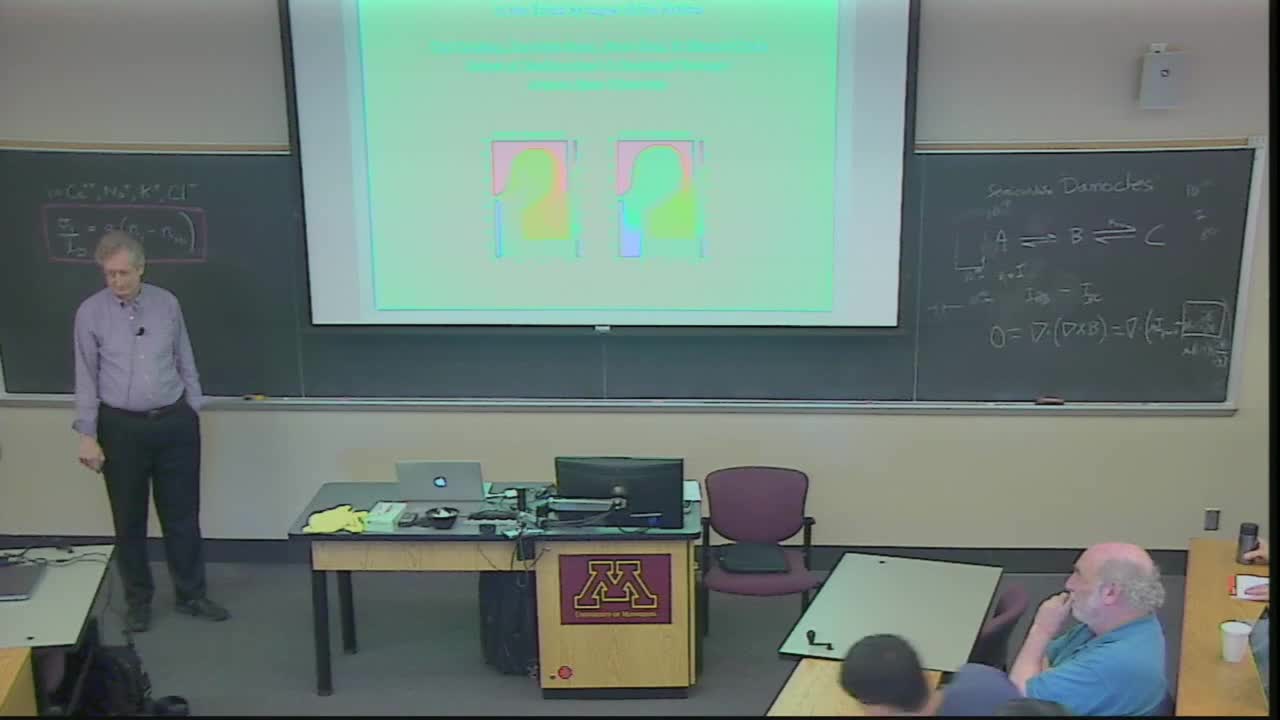Drift-diffusion Simulation of the Ephaptic Effect in the Triad Synapse of the Retina
Presenter
July 23, 2015
Keywords:
- Mechanisms
MSC:
- 70B15
Abstract
Experimental evidence suggests the existence of a negative feedback pathway between horizontal cells and cone photoreceptors in the outer plexiform layer of the retina that modulates the flow of calcium ions into the synaptic terminals of cones. However, the underlying mechanism for this feedback is controversial and there are currently three competing hypotheses: the ephaptic hypothesis, the pH hypothesis, and the GABA hypothesis. The goal of this investigation is to demonstrate the ephaptic hypothesis by means of detailed numerical simulations. The drift-diffusion (Poisson-Nernst-Planck) model with membrane boundary current equations is applied to a realistic two-dimensional cross-section of the triad synapse in the goldfish retina to verify the existence of strictly electrical feedback, as predicted by the ephaptic hypothesis. The computed steady-state cone calcium transmembrane current-voltage curves for several cases are presented and compared with experimental data on goldfish. The results provide convincing evidence that an ephaptic mechanism can produce the feedback effect seen in experiments.
